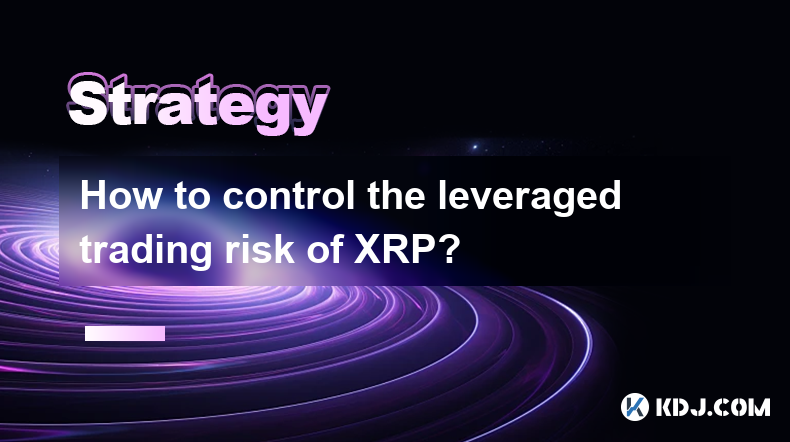-
 Bitcoin
Bitcoin $84,512.3183
-0.50% -
 Ethereum
Ethereum $1,588.1225
0.23% -
 Tether USDt
Tether USDt $0.9996
-0.01% -
 XRP
XRP $2.0642
0.48% -
 BNB
BNB $591.8173
0.47% -
 Solana
Solana $134.4792
-0.11% -
 USDC
USDC $0.9999
0.01% -
 Dogecoin
Dogecoin $0.1574
2.08% -
 TRON
TRON $0.2420
-2.16% -
 Cardano
Cardano $0.6293
2.51% -
 UNUS SED LEO
UNUS SED LEO $9.2288
1.66% -
 Chainlink
Chainlink $12.6112
1.23% -
 Avalanche
Avalanche $19.1082
0.52% -
 Toncoin
Toncoin $2.9983
2.24% -
 Stellar
Stellar $0.2408
0.84% -
 Shiba Inu
Shiba Inu $0.0...01225
4.64% -
 Hedera
Hedera $0.1660
2.02% -
 Sui
Sui $2.1233
0.65% -
 Bitcoin Cash
Bitcoin Cash $337.9337
1.98% -
 Litecoin
Litecoin $75.8547
1.24% -
 Polkadot
Polkadot $3.6527
0.78% -
 Hyperliquid
Hyperliquid $16.9003
-0.50% -
 Dai
Dai $1.0000
0.02% -
 Bitget Token
Bitget Token $4.4061
1.14% -
 Ethena USDe
Ethena USDe $0.9992
0.01% -
 Pi
Pi $0.6465
4.78% -
 Monero
Monero $214.7733
-0.74% -
 Uniswap
Uniswap $5.1912
0.85% -
 Pepe
Pepe $0.0...07309
1.65% -
 OKB
OKB $50.3150
0.15%
How to use Binance margin trading for hedging?
Use Binance margin trading to hedge crypto investments by borrowing funds, opening short positions, and managing risks with stop-loss orders and margin level monitoring.
Apr 06, 2025 at 04:43 pm

How to Use Binance Margin Trading for Hedging?
Hedging is a strategy used by traders to reduce risk in their investments. In the world of cryptocurrencies, Binance offers a robust platform for margin trading that can be effectively used for hedging purposes. This article will guide you through the process of using Binance margin trading for hedging, detailing each step and explaining the necessary considerations.
Understanding Margin Trading on Binance
Before diving into hedging, it's crucial to understand what margin trading on Binance entails. Margin trading allows you to borrow funds to increase your trading position, potentially amplifying both gains and losses. Binance offers both cross margin and isolated margin trading modes. Cross margin uses your entire account balance as collateral, while isolated margin allows you to allocate a specific amount of funds to a single position.
To start margin trading on Binance, you need to:
- Enable Margin Trading: Navigate to the Binance website, go to the "Wallets" section, and select "Margin". Click on "Enable" to activate margin trading.
- Transfer Funds: Move funds from your spot wallet to your margin wallet. This can be done by selecting "Transfer" in the margin wallet section.
- Choose Your Trading Pair: Select the cryptocurrency pair you wish to trade on the margin trading interface.
Setting Up a Hedging Strategy
Hedging involves taking a position in a related asset to offset potential losses in your primary investment. On Binance, you can hedge your spot positions using margin trading. Here's how to set up a basic hedging strategy:
- Identify the Asset to Hedge: Suppose you hold a significant amount of Bitcoin (BTC) and want to hedge against potential price drops.
- Select the Hedging Instrument: You decide to use Bitcoin futures contracts on Binance. These contracts allow you to take a short position on BTC, which will profit if the price of BTC falls.
- Open a Short Position: Navigate to the futures trading section on Binance, select the BTC futures contract, and open a short position. The size of this position should be calculated based on the amount of BTC you want to hedge.
Executing the Hedge on Binance Margin
To execute the hedge using Binance margin trading, follow these steps:
- Borrow Funds: In the margin trading section, select the asset you want to borrow (e.g., USDT) and the amount needed to open your short position.
- Open the Short Position: Use the borrowed funds to open a short position on the BTC futures contract. Ensure that the size of the short position matches the value of your BTC holdings you wish to hedge.
- Monitor and Adjust: Keep an eye on the market movements and adjust your hedge as necessary. If the price of BTC moves significantly, you may need to rebalance your hedge to maintain its effectiveness.
Managing Risk and Margin Calls
Effective hedging requires careful risk management. On Binance, you need to be aware of margin calls, which occur when the value of your collateral falls below a certain threshold. To manage this risk:
- Set Stop-Loss Orders: Use stop-loss orders to automatically close your positions if the market moves against you. This can help prevent significant losses.
- Monitor Your Margin Level: Regularly check your margin level to ensure it remains above the maintenance margin requirement. If it falls too low, you may receive a margin call, requiring you to deposit more funds or close positions.
- Diversify Your Hedge: Consider using multiple hedging instruments or strategies to spread your risk. For example, you could use both futures contracts and options to hedge your BTC position.
Closing Your Hedge
When you decide to close your hedge, follow these steps:
- Close the Short Position: Navigate to the futures trading section and close your short position on the BTC futures contract. This will return the borrowed funds to your margin account.
- Repay the Borrowed Funds: Go to the margin wallet section and repay the borrowed USDT. Ensure you have enough funds in your margin wallet to cover the repayment.
- Transfer Funds Back: Once the borrowed funds are repaid, you can transfer any remaining funds back to your spot wallet.
Monitoring and Adjusting Your Hedge
Hedging is not a set-and-forget strategy. You need to continuously monitor and adjust your hedge to ensure it remains effective. Here are some tips for ongoing management:
- Regularly Review Market Conditions: Keep an eye on market news and trends that could affect the price of BTC. Adjust your hedge accordingly to maintain its effectiveness.
- Reassess Your Risk Tolerance: As market conditions change, your risk tolerance may also change. Reassess your risk tolerance and adjust your hedge size and strategy as needed.
- Use Advanced Tools: Binance offers various tools and indicators that can help you monitor and adjust your hedge. Utilize these tools to make informed decisions.
Frequently Asked Questions
Q: Can I use margin trading to hedge against multiple cryptocurrencies simultaneously?
A: Yes, you can use margin trading to hedge against multiple cryptocurrencies. However, you need to manage each hedge separately and ensure you have enough collateral to cover all positions. It's important to carefully calculate the size of each hedge to avoid over-leveraging.
Q: What are the fees associated with margin trading on Binance?
A: Binance charges various fees for margin trading, including borrowing fees, trading fees, and funding fees for futures contracts. The exact fees depend on the asset and the trading pair. It's important to review the fee structure on the Binance website before engaging in margin trading.
Q: How can I avoid liquidation when using margin trading for hedging?
A: To avoid liquidation, you should maintain a healthy margin level by monitoring your positions and adding more collateral if necessary. Setting stop-loss orders and regularly reviewing your risk exposure can also help prevent liquidation.
Q: Is it possible to hedge long-term positions using Binance margin trading?
A: Yes, you can use Binance margin trading to hedge long-term positions. However, you need to be aware of the costs associated with holding positions over an extended period, such as borrowing fees and funding fees. Regularly reassess your hedge to ensure it remains cost-effective.
Disclaimer:info@kdj.com
The information provided is not trading advice. kdj.com does not assume any responsibility for any investments made based on the information provided in this article. Cryptocurrencies are highly volatile and it is highly recommended that you invest with caution after thorough research!
If you believe that the content used on this website infringes your copyright, please contact us immediately (info@kdj.com) and we will delete it promptly.
- 3 Cryptos Heating Up, But This Time, Price-Conscious Buyers Are Stealing the Spotlight
- 2025-04-19 09:15:13
- This Week in Bitcoin: BTC Remains Stable Around $84k
- 2025-04-19 09:15:13
- Decentralized economy isn't always that decentralized
- 2025-04-19 09:10:13
- DIA to Host an AMA on X on April 23rd at 16:00 UTC
- 2025-04-19 09:10:13
- American Asset Management Company Canary Capital Has Taken a New Leap
- 2025-04-19 09:05:13
- Canary Capital Files to Launch the First US-Listed ETF Focused on Tron's TRX Token That Includes the Staking Feature
- 2025-04-19 09:05:13
Related knowledge

What does SHIB's Cardano coefficient below 0.3 indicate?
Apr 19,2025 at 08:00am
What does SHIB's Cardano coefficient below 0.3 indicate? The Cardano coefficient, often used within the cryptocurrency community, is a metric that helps investors and analysts understand the correlation between different cryptocurrencies. When it comes to SHIB (Shiba Inu) and its Cardano coefficient falling below 0.3, this indicates a relatively low cor...

Should I reverse the operation when the long-short ratio of SHIB perpetual contract reaches 3:1?
Apr 19,2025 at 04:36am
Understanding the Long-Short Ratio in SHIB Perpetual ContractsThe long-short ratio is a key metric in the world of cryptocurrency trading, particularly when dealing with perpetual contracts. For SHIB (Shiba Inu) perpetual contracts, this ratio indicates the balance between traders who are betting on the price of SHIB to rise (long positions) and those b...

Where is the average cost line for short-term holders of SHIB?
Apr 19,2025 at 03:42am
The average cost line for short-term holders of SHIB, or Shiba Inu cryptocurrency, is a critical indicator that provides insights into the behavior and sentiment of investors who have held the token for a shorter duration. This line represents the average price at which these short-term holders acquired their SHIB tokens. Understanding where this line s...

What should I do after the head and shoulders top pattern of XRP appears?
Apr 19,2025 at 01:28am
The head and shoulders top pattern is a significant technical analysis indicator that many traders and investors in the cryptocurrency market, including those involved with XRP, pay close attention to. When this pattern appears in the price chart of XRP, it is often interpreted as a bearish signal, suggesting that a reversal in the current uptrend may b...

What does it mean for XRP to confirm the breakout of the previous high and then step back?
Apr 19,2025 at 04:42am
What does it mean for XRP to confirm the breakout of the previous high and then step back? In the world of cryptocurrency, technical analysis plays a crucial role in understanding market movements and potential future trends. One specific scenario that traders and investors often analyze is when a cryptocurrency, such as XRP, confirms the breakout of a ...

How to control the leveraged trading risk of XRP?
Apr 18,2025 at 09:50pm
Leveraged trading of XRP, like any other cryptocurrency, involves significant risk due to the high volatility of the market. Understanding and controlling these risks is crucial for any trader looking to engage in leveraged trading. This article will guide you through the essential steps and strategies to manage the risks associated with leveraged tradi...

What does SHIB's Cardano coefficient below 0.3 indicate?
Apr 19,2025 at 08:00am
What does SHIB's Cardano coefficient below 0.3 indicate? The Cardano coefficient, often used within the cryptocurrency community, is a metric that helps investors and analysts understand the correlation between different cryptocurrencies. When it comes to SHIB (Shiba Inu) and its Cardano coefficient falling below 0.3, this indicates a relatively low cor...

Should I reverse the operation when the long-short ratio of SHIB perpetual contract reaches 3:1?
Apr 19,2025 at 04:36am
Understanding the Long-Short Ratio in SHIB Perpetual ContractsThe long-short ratio is a key metric in the world of cryptocurrency trading, particularly when dealing with perpetual contracts. For SHIB (Shiba Inu) perpetual contracts, this ratio indicates the balance between traders who are betting on the price of SHIB to rise (long positions) and those b...

Where is the average cost line for short-term holders of SHIB?
Apr 19,2025 at 03:42am
The average cost line for short-term holders of SHIB, or Shiba Inu cryptocurrency, is a critical indicator that provides insights into the behavior and sentiment of investors who have held the token for a shorter duration. This line represents the average price at which these short-term holders acquired their SHIB tokens. Understanding where this line s...

What should I do after the head and shoulders top pattern of XRP appears?
Apr 19,2025 at 01:28am
The head and shoulders top pattern is a significant technical analysis indicator that many traders and investors in the cryptocurrency market, including those involved with XRP, pay close attention to. When this pattern appears in the price chart of XRP, it is often interpreted as a bearish signal, suggesting that a reversal in the current uptrend may b...

What does it mean for XRP to confirm the breakout of the previous high and then step back?
Apr 19,2025 at 04:42am
What does it mean for XRP to confirm the breakout of the previous high and then step back? In the world of cryptocurrency, technical analysis plays a crucial role in understanding market movements and potential future trends. One specific scenario that traders and investors often analyze is when a cryptocurrency, such as XRP, confirms the breakout of a ...

How to control the leveraged trading risk of XRP?
Apr 18,2025 at 09:50pm
Leveraged trading of XRP, like any other cryptocurrency, involves significant risk due to the high volatility of the market. Understanding and controlling these risks is crucial for any trader looking to engage in leveraged trading. This article will guide you through the essential steps and strategies to manage the risks associated with leveraged tradi...
See all articles
























































































